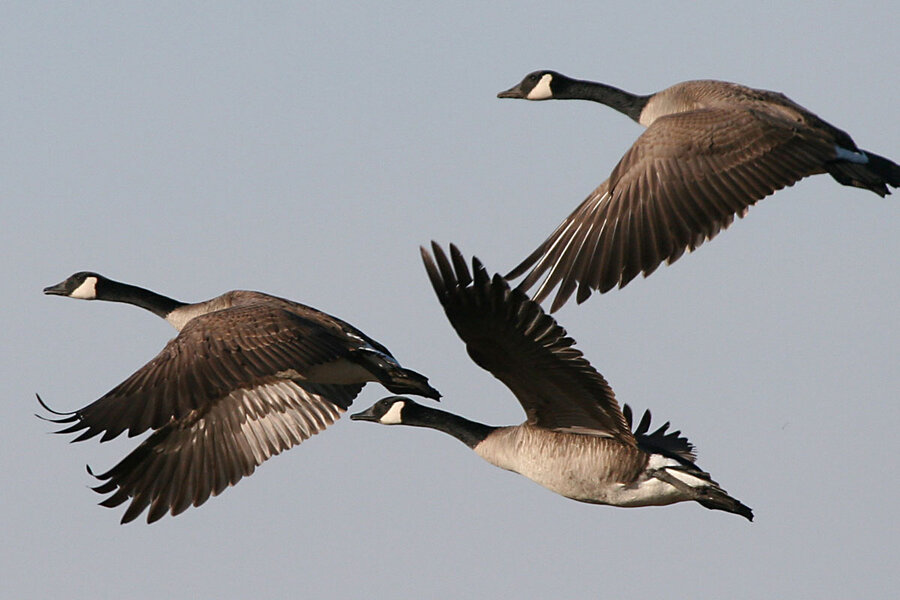Geese find sanctuary in cities
Loading...
Geese have long flocked to cities, going back to at least 390 BC, when, according to legend, a sacred gaggle alerted Romans to invading Gauls. It has long been assumed that the geese were drawn by the food.
But new research suggests it’s a city’s safety and warmth, not the cuisine, that attracts the birds. A study of Canada geese in Chicago published Oct. 11 in the journal The Condor: Ornithological Applications found that most geese remained in the metro area during winter, and those that left were far less likely to survive.
“Survival was dramatically reduced for geese that left the [Chicago metro area] during winter when hunting seasons were open,” says Heath Hagy, former research program leader with the Illinois Natural History Survey, who co-wrote the paper. “This difference likely created a selective pressure for birds to remain within the urban area to maximize survival.”
Dr. Hagy and his colleagues affixed GPS transmitters to 41 Canada geese between 2014 and 2016. The 35 individuals that overwintered in the metro area survived. But three of the six that left the city to forage for higher-quality agricultural grains were felled by hunters.
Cities may offer sanctuary to geese, but it comes at a cost to humans, in the form of water contamination, the geese’s aggressive behavior, and, significantly, aircraft strikes. While collisions are rare, the Canada goose is the largest bird commonly struck by aircraft in North America.
The species has been shifting its wintering ranges north in recent decades, in what the researchers suspect is a strategy to shorten their spring migration distances, even if it means putting up with lower temperatures and worse meals. To remove the geese from areas where they might cause conflict with humans, the researchers recommend disturbing them on cold days to prompt them to leave.








